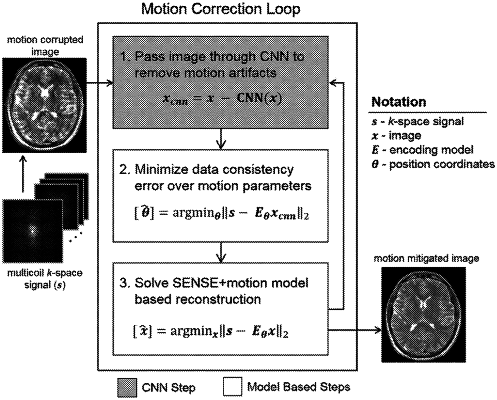| CPC G06T 7/251 (2017.01) [G06T 3/4046 (2013.01); G06T 2207/10088 (2013.01)] | 17 Claims |

|
1. A method for reconstructing an image with reduced motion artifacts from k-space data acquired with a magnetic resonance imaging (MRI) system, the method comprising:
(a) accessing k-space data with a computer system, the k-space data having been acquired from a subject using a magnetic resonance imaging (MRI) system, wherein the k-space data contain motion errors associated with motion of the subject;
(b) reconstructing a motion-corrupted image of the subject from the k-space data using the computer system;
(c) reconstructing a motion-corrected image of the subject from the k-space data using the computer system by:
inputting the motion-corrupted image to a trained neural network, generating output as a motion artifact image that depicts motion artifacts associated with the motion of the subject;
generating a difference image by subtracting the motion artifact image from the motion-corrupted image;
computing motion parameters that define one or more motion trajectories from the difference image and the k-space data; and
reconstructing the motion-corrected image of the subject by inputting the k-space data and the motion parameters to a model-based image reconstruction algorithm, generating output as the motion-corrected image.
|